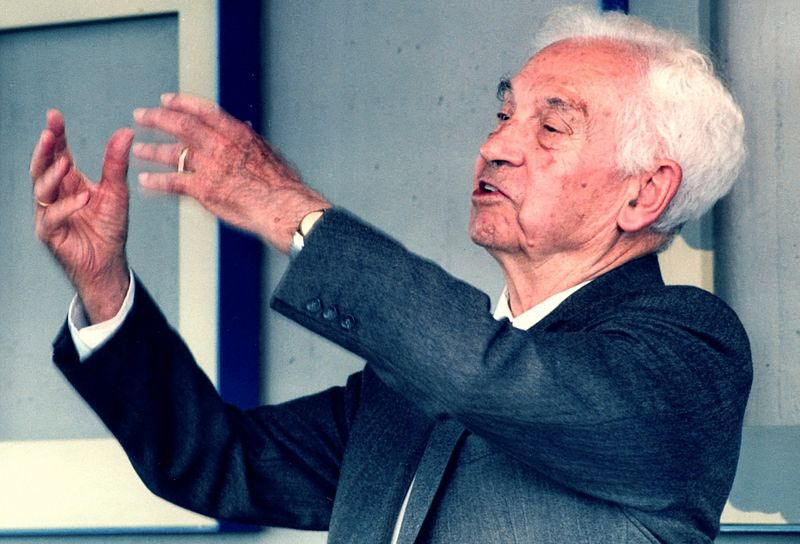| Ernst Mayr | |
|---|---|
 |
|
| Biologist | |
| Specialty | Evolutionary Biology |
| Born | July 5, 1904 Kempten, Germany |
| Died | February 3, 2005 (at age 100) Bedford, Massachusetts, United States |
| Nationality | German-American |
Ernst Mayr was a German-born American who made major and revolutionary contributions to bird taxonomy, evolution, and population genetics. He continued his research up to his death. His last book, What Makes Biology Unique, was released one month after his 100th birthday. Generally credited as the world’s finest evolutionary biologist ever, Mayr was more popularly recognized as the “Darwin of the 20th century.”
Early Life and Education
Mayr was born on July 5, 1904, at Kempten, Germany to a jurist father. He showed an early involvement in ornithology. His dad died when he was only 13 years old. In 1923, he went to the University of Greifswald and in 1926, he obtained a doctoral degree in ornithology from the University of Berlin. He was just 21 years of age when he received his doctorate.
Bird Collection
Mayr received an appointment as an assistant at the museum of the University of Berlin. However, he was desperate to take on an expedition to an exotic and remote place in the way of the great 1800s naturalists. Stresemann proposed Mayr to Lord Walter Rothschild, a naturalist and banker who held the earth’s largest non-public collection of bird specimens, located at his museum in Tring, England. He paid for Mayr to start a collecting trip in the Dutch East Indies, which is currently Indonesia.
Mayr’s quest took him deep in to the interior of New Guinea, far away from the rule of the colonial government bodies, who considered the residents of the interior with almost irrational dread. At some point, it was declared that Mayr had been murdered by the local people, but in fact, he was securely and gladly collecting bird specimens together with his local guides, with whom he experienced excellent relationship.
Botanical Discoveries
On this trip, Mayr discovered several plant and animal kinds previously unfamiliar to western science. During the period of his career, he had named 26 new bird species and 38 new orchid species. While he was in New Guinea, he met a team of naturalists from the American Museum of Natural History who asked him to participate on an expedition in the Solomon Islands.
Settling in New York
In 1931, Mayr acknowledged an invite to join the American Museum in New York as a staff member. Thankful to be safe in New York, USA, as the Nazis took authority in his native land of Germany, Mayr settled completely in the US. In 1935, he married Margarete Simon.
Mayr’s Ideas about Species
In 1942, Mayr published his landmark book entitled Systematics and the Origin of Species. In this book, he discussed the main concept of biological species. Previously, researchers had attempted to explain a species as a number of specific creatures with prevalent features. Applying the work of Dobzhansky and others, Mayr modified the paradigm completely by defining a species as not just a group of morphologically identical individuals, but a group whose members can interbreed only among each other.
When a population within a species get isolated due to geography, feeding technique, mate selection, or some other means, they may begin to vary from other populations via natural selection and genetic drift, and as time passes may develop in to new species.
The book also presented the idea of ‘allopatric speciation.’ This appeared to alleviate the challenge of how species evolved into a new species that Darwin in no way could understand. By utilizing newer ideas and thoughts in genetics and systematics, Ernst Mayr was able to suggest a procedure for how speciation happened.
Mayr’s later printed articles and books often found him disagreeing with mathematical geneticists and molecular geneticists. He believed these kinds of geneticists did not put enough focus on the role of environment in the development of species. Rather, they did actually concentrate on the ‘microscopic’ single genes only as opposed to his recommended ideas that the whole genome might be of interest when researching speciation.
Legacy and Death
During the period of his life, Ernst Mayr obtained several honors that were available for a scientist in his field, which includes the International Prize, the National Medal of Science, as well as the Balzan Prize. He retired in 1975, but continued to be at Harvard University as Professor Emeritus. Mayr published over 200 articles after his retirement, a lot more than many scientists publish in a life-time.
Ernst Mayr spent the rest of his prominent career in the Harvard University as a zoology professor. He died on February 3, 2005, at Bedford in Massachusetts. He was 100 years old.